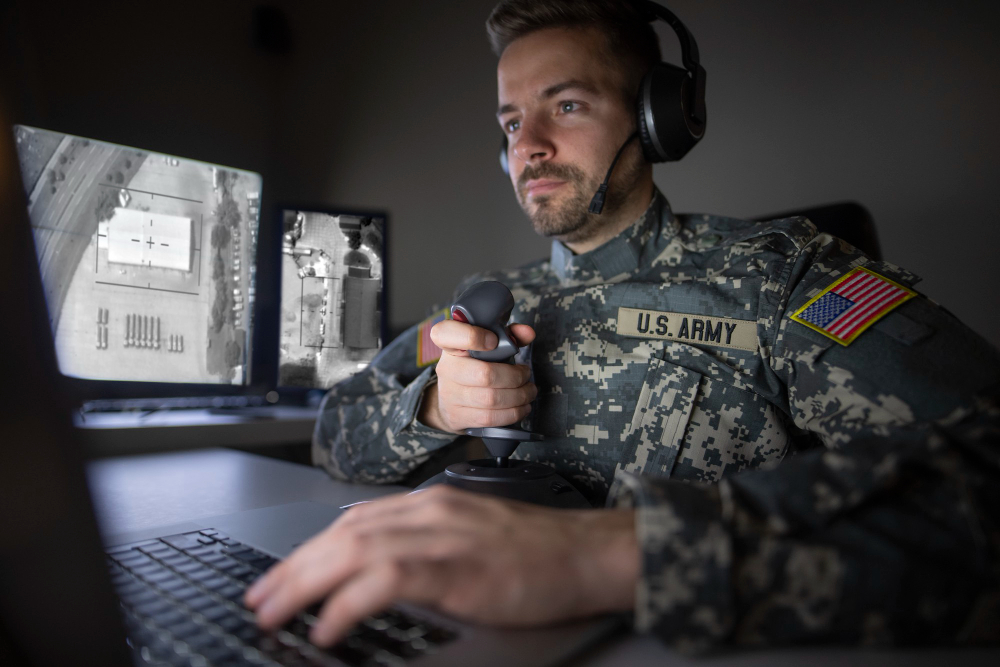작전 환경 번역(영어 원본)1-5. Operational environments remain dynamic. Joint, interagency, intergovernmental, and multinational partners are among the wide range of actors. Coalitions, alliances, and partnerships vary. International news organizations, using the latest technologies, provide real-time reports from the area of operations.
1-6. Cultural, demographic, and physical factors, including humanitarian crises and ethnic and religious conflicts, continue to fuel existing conflicts and spark deadly new clashes. Urban terrain and other complex terrain become havens for threats.
Characteristics of Threats
1-7. Increasingly, Army forces face hybrid threats. A hybrid threat is the diverse and dynamic combination of regular forces, irregular forces, criminal elements, or a combination of these forces and
elements all unified to achieve mutually benefitting effects (FM 3-0). They are ever adaptive, using increased technological capabilities. They are smart and innovative. They hide or fight within the
population. Their actions cannot always be accurately predicted. Enemies attack with every means possible and at every opportunity, seeking to exploit real or perceived vulnerabilities. In a single campaign, Army forces may fight several enemies with different goals and capabilities, rather than a single enemy unified by purpose or command.
1-8. Present and future military conflicts resist traditional categorization. Formerly, major combat operations pitted large conventional forces of opposing nation-states against one another. Special operations forces were the elements of choice to conduct unconventional and irregular warfare as part of foreign internal defense missions. America’’s nuclear and conventional capabilities deterred attacks on the Homeland and U.S. vital interests. These scenarios no longer characterize military conflicts. The Army
today must become far more flexible, built around units at every echelon with the training, competence, and ability to apply lethal and non-lethal combat power against a wide range of threats in complex situations. This requires that the Army capitalize on its combat-hardened junior leaders and high-quality recruits through training that emphasizes mission command.
MISSION COMMAND AND TRAINING FOR FULL SPECTRUM OPERATIONS
1-9. Mission command is the exercise of authority and direction by the commander using mission orders to enable disciplined initiative within the commander’s intent to empower agile and adaptive leaders in the conduct of full spectrum operations. It is commander-led and blends the art of command and the science of control to integrate the warfighting functions to accomplish the mission (FM 3-0). Effective mission command requires Soldiers and leaders trained to operate in ill-defined, ambiguous conditions. Through training, Soldiers learn to act decisively while accepting prudent risks. Training assists Soldiers and leaders in developing mutual trust through a shared understanding of the unit’s strengths and weaknesses. Training also reinforces the need for Soldiers and leaders to collaborate and dialog in order to achieve a greater understanding of the operational environment. |
작전 환경 번역(한국어 번역본)1-5. 작전 환경은 역동적이다. 공동, 부처 간, 정부 간 및 다국가적 파트너가 작전 환경에 영향을 미칠 수 있다. 동맹, 연합, 파트너십은 다양한 양상을 띤다. 첨단 기술을 활용하는 국제 언론 기관이 실시간으로 작전 지역에서의 소식을 전한다.
1-6. 인도주의적 사건, 윤리 및 종교 분쟁 등의 문화적, 인구학적, 물리적 요인들이 기존의 분쟁을 악화시키고 새로운 갈등에 불을 붙인다. 도심 지역과 기타 복잡 지형이 위협과 갈등의 안식처가 된다.
위협의 성격
1-7. 육군은 점점 더 많은 복합적 위협에 당면하고 있다. 복합적 위협이란 정규군, 비정규군, 범죄 세력 또는 이러한 세력의 조합 그리고 호혜적 효과를 달성하기 위해 연합한 모든 주체를 의미한다(FM 3-0). 이들은 첨단의 기술력을 활용하여 뛰어난 적응력을 보이며 혁신적이고 스마트하다. 인구 사이에서 잠복하거나 전투를 벌인다. 이들의 행동을 항상 정확하게 예측할 수는 없다. 적들은 실제적인 또는 잠재적인 취약점을 모색하며 가능한 모든 수단을 동원하여 포착할 수 있는 모든 기회마다 공격을 감행한다. 단일 작전에서 육군은 목적 또는 명령에 의해 연합한 하나의 적군이 아닌, 상이한 목표와 역량을 지닌 다수의 적과 맞서게 될 수 있다.
1-8. 현재와 미래의 군사적 갈등을 기존의 방식으로 분류할 수는 없다. 과거의 주요 전투 작전은 각국의 대규모 재래식 병력 간의 대결이었다. 특수 작전 부대는 주둔국의 반란 세력에 대한 작전의 일환으로 비재래적이고 특수한 전투를 수행하기 위한 선택적 요소였다. 미국의 핵무기와 재래식 무기를 통해 국토와 미국의 주요 이익에 대한 공격을 방지 할 수 있었다. 현재의 군사적 갈등은 이러한 시나리오로의 범위를 초월한다. 오늘날의 육군은 훨씬 더 유연해져야 하며 복합적인 상황에서의 광범위한 위협에 대항하여 살상적 및 비살상적 전투력을 행사할 수 있도록 훈련하고 역량을 구축해야 한다. 이를 위해 육군은 임무 하달에 초점을 둔 훈련을 통하여 전투로 단련된 하사관과 훌륭한 자질을 지닌 신병들을 활용하여야 한다.
임무 하달 및 전영역 작전을 위한 훈련
1-9. 임무 하달이란 전영역 작전의 수행 중 기민하며 적응력을 갖춘 지휘관에게 권한을 부여하기 위한 목적에서 계획된 이니셔티브의 시행을 위한 명령을 사용하는 통솔자의 권한 행사를 말한다. 이는 임무 완수를 위한 전투 능력의 통합을 위하여 통제력과 통솔력을 혼합하는 통솔자 주도의 활동이다(FM 3-0). 효과적인 임무 하달을 위해서는 불명확하고 모호한 조건에서 작전을 수행할 수 있도록 훈련받은 병사와 지휘관이 필요하다. 훈련을 통해 병사들은 신중하면서도 결단력 있게 행동하는 방법을 배우게 된다. 훈련은 병사와 지휘관이 부대의 장단점에 대한 공동의 이해를 통해 상호간의 신뢰를 구축할 수 있도록 도우며 작전 환경을 보다 잘 이해하기 위한 공조와 대화의 필요성을 강화시킨다. |
